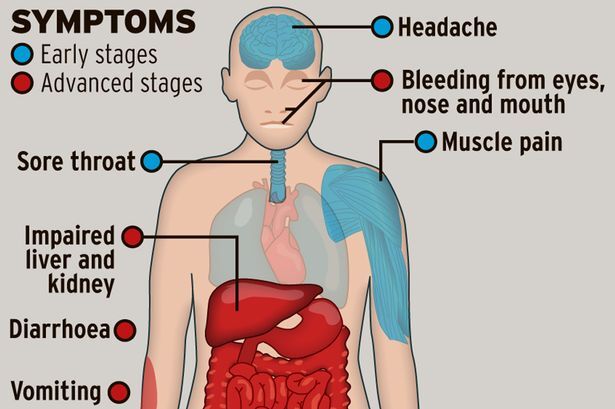Blog: Nipah Virus
- The Nipah virus (NiV) is a rare and intractable illness that results in encephalitis, or brain swelling. Mild to severe disease, and even death, might result from it. After an outbreak in pigs and people in Malaysia and Singapore in 1999, NiV was first identified.
- Although it can potentially spread through pigs and other animals, NiV is primarily disseminated by fruit bats. Additionally, it can spread from person to person.
- NiV first showed up in Malaysia in 1998, affecting pigs’ respiratory and nervous systems. People who came into contact with live, infected pigs contracted it. According to research, it emerged as a result of agricultural growth and intensification.
- NiV encephalitis outbreaks have recently been reported from Bangladesh, Malaysia, Singapore, the Philippines, and India.
What is the Zoonotic nature of the Nipah Virus?
As a zoonotic virus, the Nipah virus (NiV) may spread between people and animals. Fruit bats, often called flying foxes, are the principal carriers of the virus. Pigs and other animals can also transmit the NiV virus.
- People can contract the virus through:
- Direct coming into contact with infected animals or their bodily fluids, like blood, urine, or saliva
- consuming food items tainted with an infected animal’s bodily fluids
- Additionally, NiV can transmit from person to person. The CDC recommends standard infection control practices to prevent hospital-acquired infections.
- NiV can have serious side effects, including death.
What are the Symptoms of the Nipah virus?
- The Nipah virus (NiV) can produce a variety of symptoms, ranging from moderate to severe, including fever, headache, sore throat, cough, breathing difficulties, vomiting, encephalitis (brain infection), and death.
- Confusion, drowsiness, or disorientation are examples of severe symptoms.
- NiV cannot be treated with medication or a vaccination. Only supportive care, such as rest, hydration, and symptom management, is used as a kind of treatment.
- Droplets and objects contaminated with animal or human secretions (such as urine, saliva, etc.) can spread the NiV virus. Direct contact with infected bats, pigs, or other NiV-infected individuals may result in transmission to humans.
What is the incubation period of the Nipah Virus?
- The Nipah virus (NiV) can incubate for 5 to 14 days. Symptoms that follow exposure include:
- 3–14 days with headache and fever
- fatigue, disorientation, and confusion of thought
- respiratory signs, such as a sore throat and a cough
- The Nipah virus is linked to encephalitis or brain inflammation. From 40% to 75% of those who contract the virus pass away as a result. Depending on a nation’s capacity to identify and control the virus, the death rate fluctuates.
How can we prevent the Nipah virus from spreading?
Since the Nipah virus can spread from person to person as well as from animal to human, infection prevention entails both societal and individual precautions. Here are a few methods to lessen the risk of contracting the Nipah virus:
- Avoid Direct touch with Infected Animals:
-
-
- Because bats are the virus’s natural reservoirs, avoid coming into close touch with them, especially when it comes to their saliva, urine, and droppings.
- Avoid coming into contact with sick animals, such as pigs, who might be carrying the Nipah virus.
-
- Safe Food Practices:
-
-
- Avoid consuming raw date palm sap (toddy) that may be contaminated with bat excrement, according to safe food practices. Make sure the sap is collected and stored safely.
- Before eating, properly cook all animal meat.
-
- Personal Hygiene :
-
-
- After touching animals or their products, wash your hands thoroughly with soap and water as part of good personal hygiene.
- When sneezing or coughing, use proper respiratory hygiene by covering your mouth and nose with a tissue or your elbow.
-
- Use Personal Protective Equipemnet (PPE):
-
-
- Personal protective equipment (PPE) should be used by healthcare professionals and anyone close to a patient who has the Nipah virus to avoid coming into touch with bodily fluids.
-
- Healthcare Facility Precautions:
-
-
- To stop the spread of the Nipah virus inside the facility, healthcare facilities should have infection control procedures in place. Patients who are infected must be kept apart.
-
- Public Education:
-
- Keep up with local occurrences of the Nipah virus and heed the advice of regional health experts.
- Participate in public awareness initiatives that inform the public about the virus and how to prevent it.
Which are the places where the Nipah virus was spread in the world?
- Malaysia (1999): The Nipah virus first became known to exist in Malaysia in 1999. This outbreak caused several human illnesses and deaths and was associated with the eating of tainted date palm sap.
- Singapore (1999): The Nipah virus, which was similarly related to pigs, saw a minor outbreak during the same year as the Malaysian outbreak.
- Bangladesh (Multiple Outbreaks): The northern and central regions of Bangladesh have seen the majority of Bangladesh’s Nipah virus outbreaks. The ingestion of raw date palm sap and person-to-person transmission have both been linked to these outbreaks.
- India (Multiple Outbreaks): Several Indian states, including West Bengal, Kerala, and others, have reported Nipah virus outbreaks. Additionally connected to these epidemics are the intake of tainted date palm sap and Human to human-to-human transmission.





